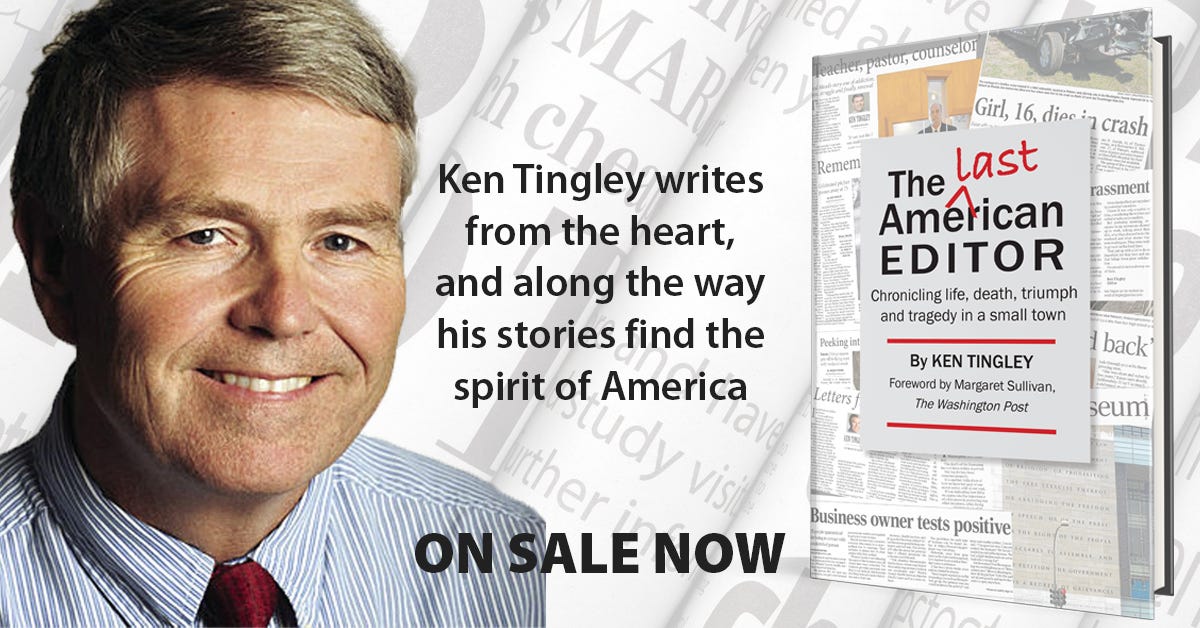The Front Page
Afternoon Update
Friday, August 13, 2021
By Ken Tingley
Gretta Hochsprung stopped by this week to interview me about my first book.
The book, The Last American Editor, is a collection of my columns from my 30 years working at The Post-Star. As I went through the process of choosing the columns and telling the stories of what happened afterward, I learned some important lessons about the work I had been doing my whole life.
Margaret Sullivan, the former Buffalo News editor who is now the media columnist at The Washington Post, wrote the foreward that helps define the book. She pointed out that newspapers write stories “of the moment.” It was something I had not considered before. The work we did at the newspaper is accurate and relevant at that moment, but it rarely has the same context or value years later.
“Newspaper work is, by its nature, ephemeral. It’s of the instant, of the day.,” Sullivan writes in the foreward. “Readers absorb it, appreciate it or object to it, and then stack the paper for recycling. And we ink-stained journalists recognize we aren’t writing for the ages but for the moment.”
It is something I had not considered before, but then Sullivan wrote this, “But here, once again, Ken Tingley manages something extraordinary. These columns are of their moment, but they also have lasting value.”
As I’ve marketed the book over the past few months, I had a lot of time to think about the work I am publishing. What I conveyed to Gretta during our interview was that this book has value because it chronicles communities at their best, and sometimes at their worst.
The columns have value because they provide a history, not necessarily of the most significant events of the day, but of the character of the people living here.
That is important.
Too often over the past few years, I have heard people say that newspapers should just “report the news.”
That’s it. Nothing more.
But I don’t believe that. The features and columns published in the newspaper were often the most read parts of the newspaper, and looking back it provided a glimpse of what the people who lived here are like.
My column about the journey of Paul Mead from drug addict to minister of the Gospel Lighthouse Church is part of that record.
Ken Powers’ chance meeting with an acquaintance named Tom Casey - not a best friend, but an acquaintance - led to Casey donating part of his liver to Powers. It saved his life.
Bruce Manell’s, a veteran and former police officer in Hudson Falls, life is chronicled for the ages.
These stories are part of the historical record.
They are stories of life and death and hardship. They will lift you up and they will bring you down. Some of them still bring tears to my eyes.
Preorders are in their last week. There will also be a Kindle version on sale next week. What I’m really looking forward is scheduling some events to get out and talk with you readers who supported me all these years.
Field of Dreams game
Yeah, it was a bit hokey when actor Kevin Costner led ballplayers from the Chicago White Sox and New York Yankees out of the cornfield at the Field of Dreams site in Iowa Thursday night, but it was still pretty cool.
Field of Dreams isn’t my favorite baseball movie - actually I classify it more as a father-son movie - but it still a pretty darn good.
It shows baseball is thinking out of the box to get more fans interested in the game. They have their work cut out for them. The Yankees blew another ninth inning lead, so this one ended to be a nightmare instead of a dram.
Book Trailer
Here is the book trailer:



